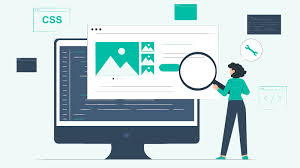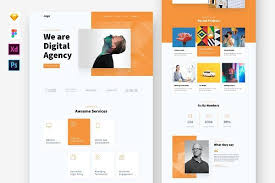Web Design and Development: Creating Engaging Online Experiences
In today’s digital age, having a strong online presence is crucial for businesses and individuals alike. A well-designed website not only attracts visitors but also keeps them engaged, encourages them to explore further, and ultimately converts them into loyal customers. This is where web design and development play a vital role.
Web design involves the visual aesthetics and layout of a website, while web development focuses on the technical implementation and functionality. Both aspects work hand in hand to create a seamless user experience.
When it comes to web design, it’s essential to strike a balance between aesthetics and usability. A visually appealing website captures attention, but if users struggle to navigate or find the information they need, they will quickly lose interest. That’s why intuitive navigation, clear calls-to-action, and organized content are fundamental elements of effective web design.
Moreover, responsive design has become increasingly important as mobile usage continues to rise. With people accessing websites from various devices such as smartphones and tablets, it’s crucial for websites to adapt seamlessly across different screen sizes. Responsive design ensures that content remains accessible and visually pleasing regardless of the device being used.
Web development brings the design concept to life by turning static visuals into interactive websites. It involves writing code using programming languages such as HTML (Hypertext Markup Language), CSS (Cascading Style Sheets), JavaScript, and more. These languages provide the foundation for creating dynamic elements like forms, animations, interactive features, and database integration.
The role of web developers extends beyond coding; they also optimize websites for speed, security, and search engine visibility. Optimizing website performance ensures fast loading times so that users don’t get frustrated waiting for pages to load. Implementing security measures protects sensitive data from potential threats such as hacking attempts or data breaches. Additionally, search engine optimization (SEO) techniques are employed to improve a website’s visibility in search engine results pages (SERPs), driving organic traffic and increasing its chances of being discovered by potential customers.
Collaboration between web designers and developers is crucial for successful web projects. Designers provide the visual direction, user interface (UI) elements, and wireframes, while developers bring those designs to life through coding and implementation. This collaborative process ensures that the final product not only looks visually appealing but also functions seamlessly.
In conclusion, web design and development are integral components of creating engaging online experiences. A well-designed website with intuitive navigation, responsive design, and visually pleasing aesthetics combined with efficient coding practices can captivate users and enhance their overall experience. By investing in professional web design and development services, businesses can establish a strong online presence, build credibility, and ultimately drive success in the digital world.
6 Essential Tips for Effective Web Design and Development: Enhancing Usability, Speed, and SEO
- Ensure your website has a responsive design to provide a seamless user experience across different devices.
- Optimize your website’s loading speed by compressing images and minifying code.
- Use clear and concise navigation menus to help users find information easily.
- Implement SEO best practices, such as using relevant keywords and meta tags, to improve your website’s visibility on search engines.
- Include social media integration to allow users to share and engage with your content easily.
- Regularly update and maintain your website to ensure it remains secure, functional, and up-to-date.
Ensure your website has a responsive design to provide a seamless user experience across different devices.
In today’s mobile-driven world, it is crucial to ensure that your website has a responsive design. A responsive design allows your website to adapt and provide a seamless user experience across various devices, including smartphones, tablets, and desktop computers. By implementing a responsive design, you eliminate the frustration of users having to zoom in or scroll horizontally to view content on smaller screens. This not only enhances user satisfaction but also improves engagement and increases the chances of conversions. With more people accessing websites on mobile devices than ever before, having a responsive design is an essential aspect of web design and development that cannot be overlooked.
Optimize your website’s loading speed by compressing images and minifying code.
One crucial tip for web design and development is to optimize your website’s loading speed by compressing images and minifying code. Large image files can significantly slow down a website’s loading time, causing frustration for users and potentially leading to higher bounce rates. By compressing images, you can reduce their file sizes without compromising too much on quality, resulting in faster loading times. Additionally, minifying code involves removing unnecessary characters, spaces, and comments from HTML, CSS, and JavaScript files. This process reduces the overall file size of your code, allowing browsers to load it more quickly. Implementing these optimization techniques ensures a smoother user experience and improves your website’s performance in search engine rankings.
Use clear and concise navigation menus to help users find information easily.
Clear and concise navigation menus are a crucial aspect of effective web design and development. By providing users with a well-organized and intuitive navigation system, they can easily find the information they are looking for without feeling overwhelmed or lost. A clean and straightforward menu structure enhances user experience, allowing visitors to navigate through the website seamlessly. By prioritizing clarity and simplicity in navigation menus, businesses can ensure that users have a positive interaction with their website, leading to increased engagement, longer site visits, and ultimately higher conversions.
Implement SEO best practices, such as using relevant keywords and meta tags, to improve your website’s visibility on search engines.
Implementing SEO best practices is crucial for improving your website’s visibility on search engines. By using relevant keywords and meta tags strategically, you can optimize your website’s content to align with what users are searching for. Incorporating targeted keywords in your website’s copy, headings, and image alt text helps search engines understand the context of your content and rank it higher in search results. Additionally, optimizing meta tags, including the title tag and meta description, provides concise and informative summaries of your web pages to entice users to click through. By implementing these SEO techniques, you can increase organic traffic to your website and improve its overall visibility online.
Include social media integration to allow users to share and engage with your content easily.
Incorporating social media integration into your web design and development strategy is a valuable tip that can greatly enhance user engagement and expand the reach of your content. By seamlessly integrating social media sharing buttons or widgets, you empower users to effortlessly share your website’s content with their networks, increasing its visibility and potential for virality. This integration not only encourages user interaction but also allows for easy access to additional channels where users can engage with your brand and contribute to the growth of your online presence. By leveraging the power of social media, you can amplify the impact of your website’s content and foster a sense of community around your brand.
Regularly update and maintain your website to ensure it remains secure, functional, and up-to-date.
Regularly updating and maintaining your website is a crucial aspect of web design and development. By keeping your website up-to-date, you ensure that it remains secure, functional, and aligned with the latest technological advancements. Regular updates include installing security patches, software updates, and bug fixes to protect against potential vulnerabilities. Additionally, maintaining your website ensures that all features and functionalities are working correctly, providing a seamless user experience. By staying proactive in updating and maintaining your website, you demonstrate professionalism and reliability to your visitors while safeguarding against potential issues that could hinder its performance.




